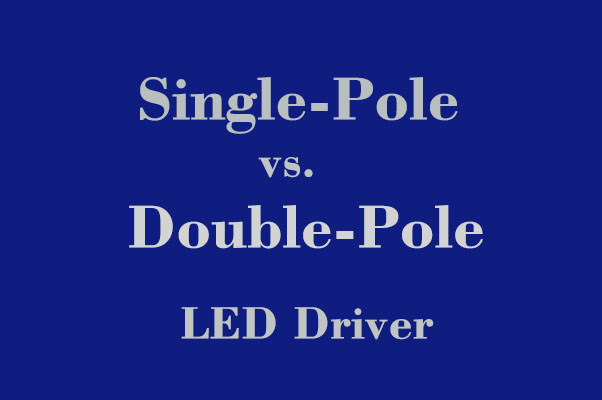In the field of lighting and electronic devices, driver power supplies are crucial components that convert AC power into DC power for loads such as LED lamps and electronic devices. When choosing the right driver power supply, an important consideration is the output polarity, which includes two types: single-pole and dual-pole. This article will delve into the principles, characteristics, and applicable scenarios of single-pole and dual-pole driver power supplies.
Single-Pole Driver Power Supplies
Single-pole driver power supplies provide only one polarity of output, typically positive polarity. Its output terminal includes a positive polarity wire (+) and a ground wire (GND). This means that its output is a unipolar voltage relative to ground, without a voltage difference between positive and negative polarities. Single-pole driver power supplies are commonly used in some simple applications, such as basic lighting needs or low-power electronic devices. For example, simple desk lamps or LED bulbs in home lighting can typically use single-pole driver power supplies because they do not require complex power outputs.
However, single-pole driver power supplies also have some limitations. Since their output has only one polarity, they cannot meet the special requirements of some loads, such as devices that require a voltage difference between positive and negative polarities to function properly. Additionally, in scenarios where electrical safety requirements are high, single-pole driver power supplies may not be ideal because they lack a negative polarity wire and cannot provide electrical isolation.
Double-Pole Driver Power Supplies
Double-pole driver power supplies provide two polarities of output, namely positive polarity (+) and negative polarity (-), as well as a ground wire (GND). The voltage difference between the positive and negative polarity wires is used to supply power to the load, while the ground wire is used to connect to the ground, providing electrical grounding. Dual-pole driver power supplies can typically meet more complex load requirements, including devices that require a voltage difference between positive and negative polarities to function properly. For example, some high-power luminaires or LED displays in LED lighting systems typically require dual-pole driver power supplies to provide stable power output.
Additionally, double-pole driver power supplies can better support some special functions, such as dimming and color control. For example, in LED lighting systems that require dimming functionality, dual-pole driver power supplies can provide greater flexibility and precision to meet different brightness requirements. In LED luminaires that require RGB or RGBW color control, dual-pole driver power supplies can achieve color changes by controlling the voltage of the positive and negative polarity wires, resulting in richer and more colorful lighting effects.
Conclusion
Single-pole and dual-pole driver power supplies are two common types of power supplies for lighting and electronic devices. They differ in output polarity and applicable scenarios, so when choosing the right driver power supply, it is necessary to consider specific load requirements and application scenarios. Understanding the characteristics and advantages and disadvantages of single-pole and dual-pole driver power supplies can help users make wiser choices to ensure the stability and safety of power supplies. By properly selecting single-pole or dual-pole driver power supplies, better lighting effects and electronic device performance can be achieved.
